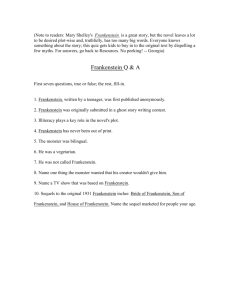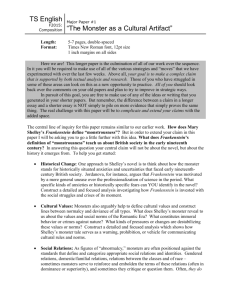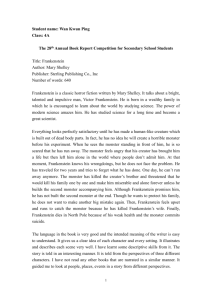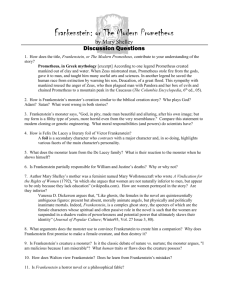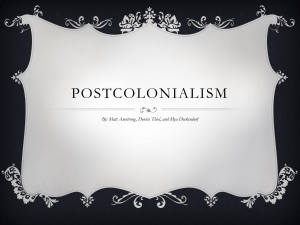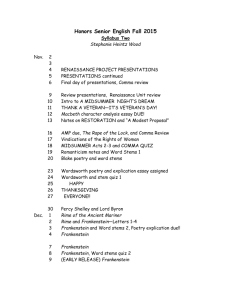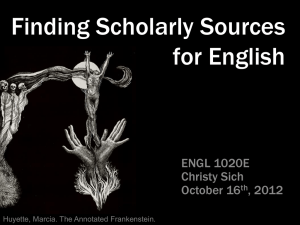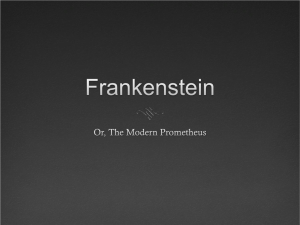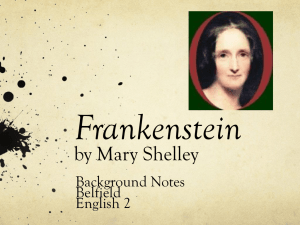Man-Made Monsters
advertisement
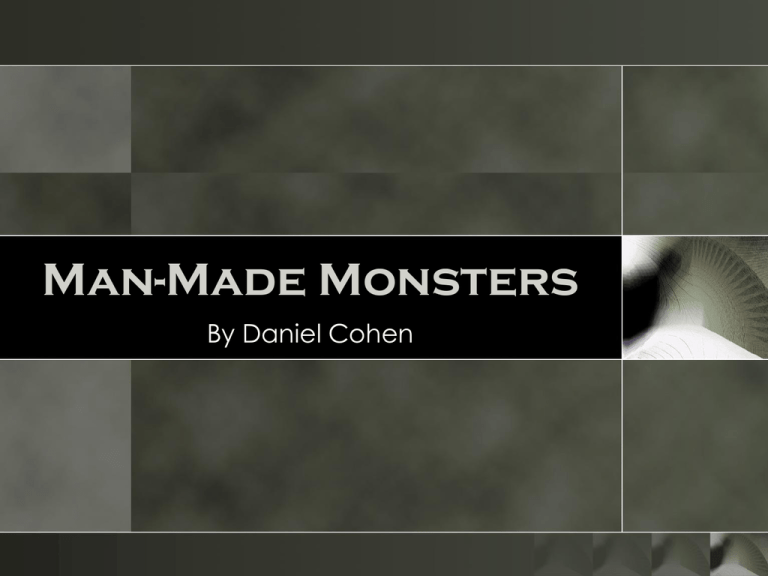
Man-Made Monsters By Daniel Cohen Essential Question #1 What are the most effective ways to organize a nonfiction text? chronological order cause and effect compare and contrast proposition and support Essential Question #2 What influence can text organization have on the tone of a selection? Text organization can determine tone because the structure is the foundation of the writing. As the writer organizes the ideas, he or she creates the tone through the word choice and the structure of the information within the selection. Who is Frankenstein’s Monster? Do we really know who Frankenstein’s monster is? Do we really know what Frankenstein’s monster is? What kind of personality did he have? Maybe he is: Blue? Big and Dumb? Dark and mysterious? Is he nice? Cute and Cuddly? Frankenstein’s Monster? Know Want Learned Building Background Frankenstein’s Monster Frankenstein originated in a book by Mary Shelley, Frankenstein. Now on cartoons and cereal boxes, the images first appeared in 1910 in a silent movie. Different versions of the monster have been shown since. There are several movies and works of literature based on Shelley’s character of Frankenstein. Boris Karloff’s Frankenstein Here is the original movie trailer for Boris Karloff’s Frankenstein… http://www.youtube.com/watch?v=bK yiXjyVsfw Words to Know The old man was known around the city for his lack of benevolence. His social skills were less than flourishing; they were usually considered more of an abomination. No one was willing to speculate where his problems originated. Thus, he continued to be notorious for his ruthless behavior throughout the city. On your own sheet of paper, write a possible definition for each of the underlined words. Definitions Benevolence: (n) kindness, goodwill Flourishing: (adj) thriving, prosperous Abomination: (n) a hateful or disgusting thing Speculate: (v) to draw a conclusion without firm evidence; to guess Notorious: (adj) well-known, particularly for disgraceful behavior What is that? Connect the word to its phrase Prometheus Sorcerer Hephaestus Bavarian city of Ingolstadt Wild boar Dissection Neanderthal man A god of fire and craftsmen A town on the Danube river in Bavaria (a region in southern Germany) A cutting apart for study or examination A wild pig An extinct relative of modern human beings A man who practices witchcraft; wizard A Titan of Greek mythology Informative Nonfiction?!? Why is this selection considered informative nonfiction? News stories, magazine articles, and the writing found in encyclopedias, textbooks, and reference books are all types of informative nonfiction. The main purpose of informative nonfiction is: to give readers factual information about real people, places, and events. Back to the Essential Question How are texts organized? Nonfiction writers choose a pattern or patterns of text organization to help develop facts and events. Four commonly used: 1. 2. 3. 4. Chronological order (time) Cause and effect (chain of events) Compare and contrast (Venn diagram) Proposition and support (make a point) As you read, think about which type or types Daniel Cohen is choosing to organize this text. Post-Reading Activity How are texts organized? For this particular selection, the text is organized in two ways: Chronological Order and Compare/Contrast Complete the handout for the selection by providing specific details from the text to support the two organizational styles used. Be very specific. Don’t forget to go back and fill in the “Learned” portion of your K-W-L. A Little Help from BrainPOP… http://www.brainpop.com/english/famousauthors andbooks/frankenstein/
